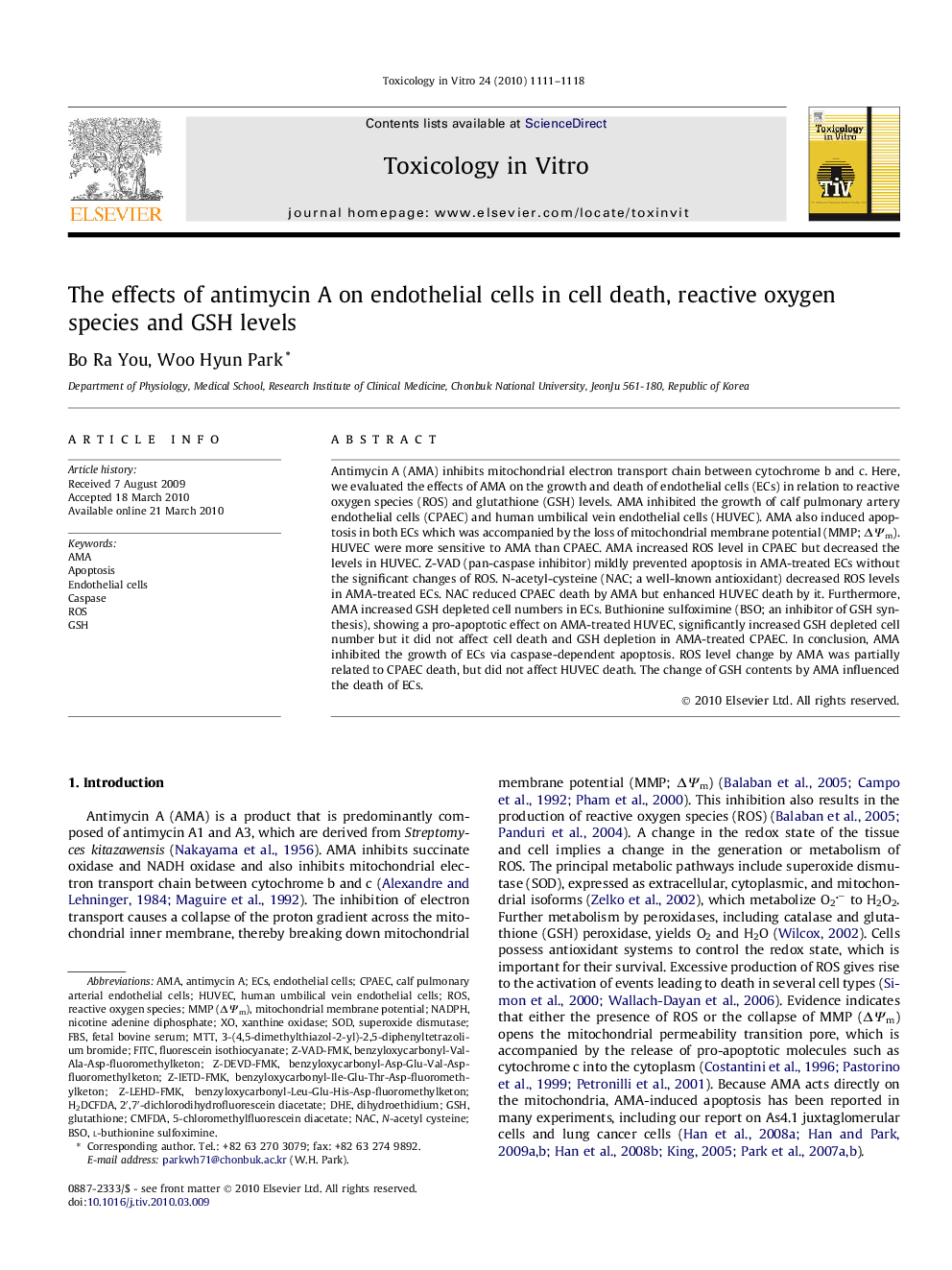| Article ID | Journal | Published Year | Pages | File Type |
|---|---|---|---|---|
| 2602744 | Toxicology in Vitro | 2010 | 8 Pages |
Antimycin A (AMA) inhibits mitochondrial electron transport chain between cytochrome b and c. Here, we evaluated the effects of AMA on the growth and death of endothelial cells (ECs) in relation to reactive oxygen species (ROS) and glutathione (GSH) levels. AMA inhibited the growth of calf pulmonary artery endothelial cells (CPAEC) and human umbilical vein endothelial cells (HUVEC). AMA also induced apoptosis in both ECs which was accompanied by the loss of mitochondrial membrane potential (MMP; ΔΨm). HUVEC were more sensitive to AMA than CPAEC. AMA increased ROS level in CPAEC but decreased the levels in HUVEC. Z-VAD (pan-caspase inhibitor) mildly prevented apoptosis in AMA-treated ECs without the significant changes of ROS. N-acetyl-cysteine (NAC; a well-known antioxidant) decreased ROS levels in AMA-treated ECs. NAC reduced CPAEC death by AMA but enhanced HUVEC death by it. Furthermore, AMA increased GSH depleted cell numbers in ECs. Buthionine sulfoximine (BSO; an inhibitor of GSH synthesis), showing a pro-apoptotic effect on AMA-treated HUVEC, significantly increased GSH depleted cell number but it did not affect cell death and GSH depletion in AMA-treated CPAEC. In conclusion, AMA inhibited the growth of ECs via caspase-dependent apoptosis. ROS level change by AMA was partially related to CPAEC death, but did not affect HUVEC death. The change of GSH contents by AMA influenced the death of ECs.
